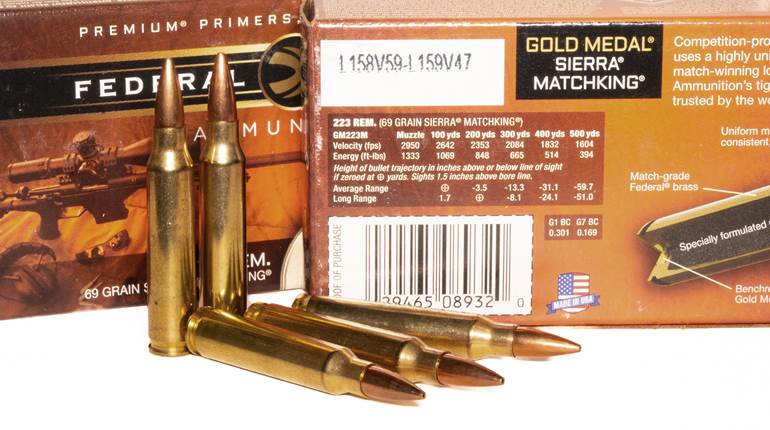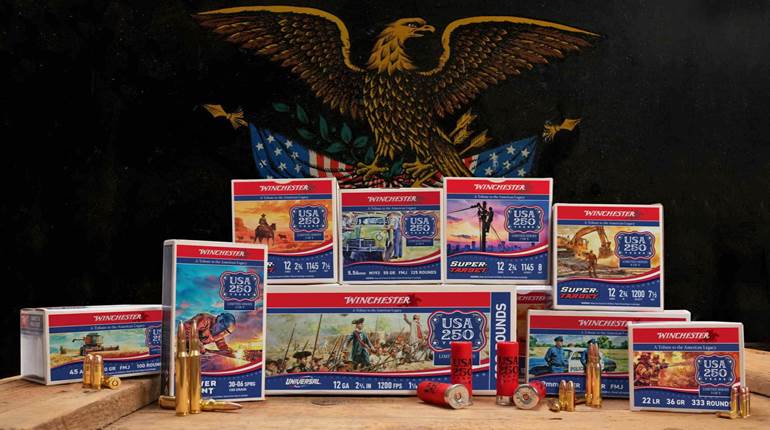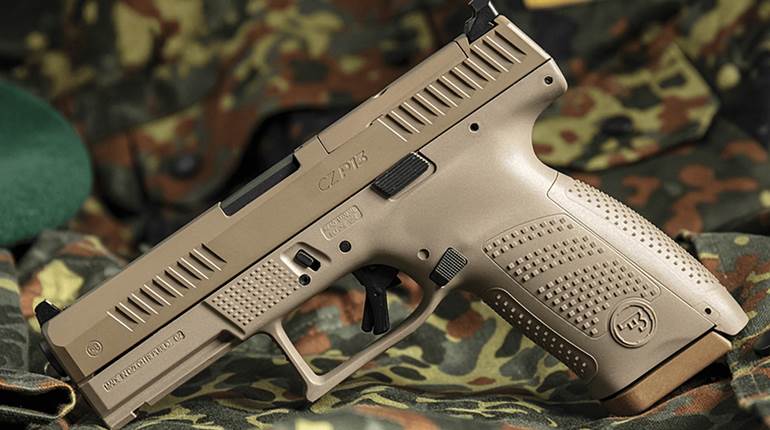
2/28/2013
Choosing a bullet for a lever-action rifle cartridge has long been no more complicated than selecting one toward the lighter end of the weight range for deer or one of greater weight when more penetration is needed for larger game. Examples include the Hornady 200-grain flat-nose in the .348 Win. for whitetails and the Barnes 250-grain Original for moose, elk and black bear. That plan works as well now as it did years ago, but the latest crop of bullets from various companies offers those of us who love to hunt with the old tubular magazine lever guns even more options from which to choose.
Swift is now offering its A-Frame bullet reconfigured for the velocity windows of various lever-action rifle cartridges. Like the other A-Frames, front and rear lead cores are separated by an integral partition with the front core bonded to a thick copper jacket. Called the Lever Action Series, all have flat-nose profiles and are currently available in 0.308-inch-diameter (150 and 170 grain), 0.348-inch, 200 grain, 0.458-inch, 350 grain and two others, 0.474-inch, 400 grain for the .475 Turnbull and 0.509-inch, 450 grain for the .50 Alaskan, .50-110 Win. and other cartridges using a nominal bullet diameter of 0.510 inches. Although not new, .44-cal. A-Frame handgun bullets in 240, 280 and 300 grains are equally suitable for use in the .444 Marlin.
The A-Frame’s construction allows Swift to design a bullet for low-velocity expansion on soft targets, such as deer, without sacrificing penetration on larger game. The 350-grain, .45-70 Gov’t bullet typically opens up to just over 0.500 inches at an impact speed as low as 1,250 fps while at 1,500 fps, frontal diameter is in the 0.600-inch range. The latter impact velocity is about what the .45-70 Gov’t in the Marlin Model 1895 is capable of at 175 yards. At 2,500 fps, which is well beyond the impact velocity range of the .45-70 Gov’t in the Ruger No. 1 and deep into .458 Win. Mag. country, frontal diameter averages around 0.700 inches. Up to 2,300 fps, weight retention runs close to 100 percent while at 2,500 fps it is around 85 percent. Regardless of impact velocity, enough of the shank remains intact to ensure deep penetration.
Monolithic bullets of several diameters from Barnes are designed for use in tubular-magazine rifles and huge nose cavities ensure expansion. Measuring 0.220 inches in diameter, the cavity in the 300-grain TSX FN bullet for the .45-70 Gov’t extends back to about its midpoint. The cavity of the .30-cal. 150-grain bullet is not as deep, but its diameter of 0.120 inches represents 39 percent of bullet diameter and that’s huge. According to Coni Brooks at Barnes, the .30-cal., 150-grain TSX FN will expand at impact velocity as low as 1,500 fps while the 300-grain, .45-cal. version is good down to 1,150 fps.
Hornady FTX bullets in diameters ranging from 0.308 inches to 0.458 inches have received a lot of attention because they are pointed yet safe to use in tubular magazines. Out to 200 yards, which is about the maximum range game is usually taken with most lever-action guns, they don’t shoot a great deal flatter than blunt-nosed bullets, but their retained velocity increases downrange energy. When both exit the muzzle of a rifle in .45-70 Gov’t at 2,100 fps, the 325-grain FTX delivers 20 percent more punch at 200 yards than a 300-grain hollow-point. Latest from Hornady is the MonoFlex bullet of monolithic, Flex Tip design in 0.458-inch, 250 grains and two 140-grain bullets with different cannelure locations, one for the .30-30 Win. (No. 30310), the other for the .308 Marlin Express (No. 30311).
Dave Emary, chief ballistic scientist at Hornady, says MonoFlex and FTX bullets of various calibers expand when impact velocity is as low as 1,500 fps although it needs to be up around 1,700 fps in order for frontal diameter to open up enough to increase effectiveness on game.
Let us now take brief looks at loading these bullets in some of America’s favorite cartridges.
.30-30 Winchester
Rifles in .30-30 Win. in the hands of no small number of Alaskans still account for game ranging in size from blacktail deer to moose, and today’s controlled-expansion bullets make the grand old cartridge more effective than ever. Several years ago, in response to requests from gun shop owners in our biggest state, Federal decided to add to its Premium line of ammunition a .30-30 Win. load with a stouter bullet. It turned to Nosler and, as a result, we have a 170-grain round-nose Partition in Federal Premium Ammunition and as a reloading component from Nosler.
For quite some time the Nosler bullet had no competition among moose and black bear hunters—and then came the 150-grain TSX HP from Barnes, followed quite recently by the Swift 150- and 170-grain A-Frames and the Hornady 140-grain MonoFlex. Don’t make the mistake of thinking that no one handloads this ancient cartridge anymore. During 2011 RCBS sold more .30-30 Win. dies than .25-06 Rem., .204 Ruger, .270 WSM, .300 Rem Ultra Mag and .338 Win Mag.
.32 Winchester Special
I recall as a youngster campfire debates among adult hunters that was about .30-30 Win. versus the .32 Win. Spl. Back then, the .32’s supporters had young minds convinced it killed deer more quickly but upon growing up it dawned on us that both cartridges push 170-grain bullets along at about the same velocity, making them performance peas of the same pod.
The .32 Win. Spl. was pretty much a forgotten cartridge until Hornady unveiled a 165-grain FTX bullet for it and, while it is doubtful that its introduction will result in a flood of new rifles chambered for it, there are already many Model 94s and Model 336s out there just begging to be dusted off and taken to the hunting fields. The rifle used in my tests, a Marlin Model 336 ADL with a 24-inch barrel, consistently shot the Hornady bullet inside 2 inches at 100 yards. It gladdens my heart to see the cartridge I used to take my very first deer once again enjoy a bit of time in the limelight.
.307 Winchester/.308 Marlin Express
Hornady produced a short run of .307 Win. ammunition loaded with the 165-grain FTX bullet, but just as quickly as it raised my hopes for one of our all-time great deer cartridges, a change in game plan resulted in it being dropped, and the .308 Marlin Express was introduced instead. (I still think they would have sold more .307 ammo).
I really cannot complain because in barrels of the same length, the .308 Marlin duplicates .307 Win. performance and that makes it suitable for use on any hoofed game in North America at reasonable distances. Hornady’s 165-grain FTX bullet went a long way toward giving the cartridge momentum during the year of its introduction and while it is an excellent bullet for game perhaps as large as caribou, hunters are more likely to choose the 170-grain Swift A-Frame or Nosler Partition when moose, elk or huge black bears are on the menu.
.348 Winchester
I used to have a Winchester Model 71 with a 20-inch barrel, a nicely checkered stock, and Winchester’s 98-A aperture sight sitting atop its bolt. It came with a quick-detachable “NRA-style” leather sling. The 24-inch barrel of my current Model 71 is about 100 fps faster with most loads. The .348 Win. recipes I have used most through the years push the Barnes 220- and 250-grain Original along at respective velocities of 2,400 and 2,250 fps. I have taken several deer with the 220-grain bullet, and believe me when I say the 250-grain bullet will dump a Texas nilgai on its nose with one shot.
New bullets make me anxious to head to the woods with one of my all-time favorite rifles. With a 30-percent improvement in ballistic coefficient, retained velocity of the Hornady 200-grain FTX at 200 yards is about the same as for a flat-nose bullet of the same weight at 125 yards, and that increases its effectiveness on deer. The Swift 200-grain A-Frame is soft enough to be used on deer yet capable of plenty of penetration on larger game so think of it as the mice-to-moose bullet that fans of the .348 Win. have long awaited.
.35 Remington
My first factory deer rifle was a Marlin 336SC in .35 Rem. I no longer have it, but I do have a slide-action Remington Model 14C with a 22-inch barrel. There was a time when the Model 14 and the later Model 141 in .35 Rem. were as common in deer and bear camps as Filson coats and L.L. Bean boots, especially in the Northeast. For woods-hunting deer, even today, I’d just as soon have one of the old .35-cal. pump guns as anything else. At 100 long paces, mine is about a 4-inch rifle with any bullet and that includes the new Hornady 200-grain FTX.
.444 Marlin
Older Marlin rifles with Micro-groove rifling at a twist rate of 1:38 inches can be a bit fussy when fed bullets heavier than 280 grains, but those built after 1998 with 1:20-inch twist Ballard-style rifling usually shoot 300-grain bullets quite accurately. Some of the new bullets transform a wonderful close- to medium-range deer cartridge into a solid performer on larger game. The Barnes 225-grain XPB offers more penetration than conventional lead-core bullets weighing as much as 240 grains. And, while I would be tempted to use it on black bear, I believe the higher sectional densities of the Swift 280- and 300-grain A-Frame bullets make them better choices not only for big bruins but for moose and elk as well. I have used the 280-grain A-Frame on caribou, and its performance left nothing to be desired.
Moving back to deer bullets, I find accuracy with the Hornady 265-grain FTX to be slightly better with the 1:20-inch twist but, even in a slower barrel, it is plenty accurate for shots as far away as should be tempted with this cartridge. Shortening the case to 2.06 inches keeps overall cartridge length compatible with the Marlin rifle.
.45-70 Government/.450 Marlin
Its square-shaped finger lever and eight-groove rifling identify my Marlin New Model 1895 as a 1972 first-year production, and its custom stock of American walnut identify it as one of my special rifles. Soon after Marlin made the old .45-70 Gov’t front-page news again, new bullets became available for it, and those weighing 300 grains.from Sierra and Hornady continue to drop deer like bolts from the blue. The 400-grain bullets from Speer and Barnes are good choices for larger game but even they can be a bit soft at velocities attainable in the Marlin 1895 and Ruger No. 1 rifles.
For the penetration sometimes required when using the .45-70 on the bigger stuff, the 300-grain TSX FN bullet from Barnes, the 350-grain Swift A-Frame and the 250-grain Hornady MonoFlex should be outstanding. I have not tried either on game but have taken a nice whitetail at about 125 yards with the Hornady 325-grain FTX. It dropped in its tracks with a nicely expanded bullet resting against the off-side hide. When loading the FTX and MonoFlex for the Marlin rifle, don’t forget to shorten the case to 1.97 inches.
.470 and .475 Turnbull
Turnbull Mfg. offers the .475 Turnbull on the .50-110 Win. case in rifles built on the Browning Model 71 and a high-quality reproduction of the Winchester Model 86 action. A shorter version called the .470 Turnbull is available on the Marlin New Model 1895 action. Velocities are 1,700 fps for the .470 and 2,050 fps for the .475, both with 450-grain bullets. Barnes, Hawk and Nosler have been making the bullets for quite some time, and Swift recently hopped aboard. Perhaps someday I will get around to shooting the .475 but in the meantime, data shot by the guys at Swift with their new 450-grain A-Frame will have to do.
.50 Alaskan/.50 B&M Alaskan
The .50 Alaskan was created back in the 1950s by Alaska gunsmith Harold Johnson for Winchester Model 71 and Model 86 rifles. Originally formed by necking up the .348 Win. case, fully formed cases are now available from Starline. The new Swift 450-grain A-Frame and the Woodleigh 500-grain Weldcore are for this cartridge as well as the .50-110 Win. and others that use a bullet diameter of 0.510 inches. Gunsmith Harry McGowen has been converting rifles to .50 Alaskan for more than 40 years.
The .50 B&M Alaskan is formed by necking down the Starline case for the 0.500-inch bullets of the .500 S&W Magnum. Any of the revolver bullets are fine in this cartridge for practice shooting and for use on deer-size game, but for larger game the 500-grain Hornady, 400-grain Barnes Buster and 325-grain Swift A-Frame are better choices. Even stouter bullets capable of taking any game on the planet were designed specifically for this cartridge by its co-developer Michael McCourry and are available from Cutting Edge and Northfork.
My rifle, built around the Marlin New Model 1895 action by SSK Industries, has a 22-inch McGowen barrel and its rifling twist rate of 1:18 inches does a good job of stabilizing bullets as long as the 500-grain Hornady. When loading the Hornady FTX, the case has to be shortened to 1.97 inches.





































